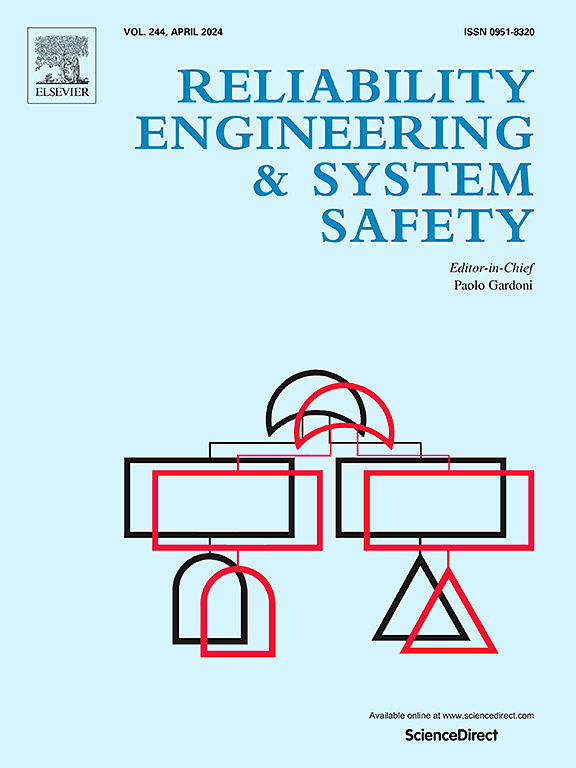An active learning method based on Monte Carlo dropout neural network for high-dimensional reliability analysis
IF 9.4
1区 工程技术
Q1 ENGINEERING, INDUSTRIAL
引用次数: 0
Abstract
In structural reliability analysis, the AK-MCS method, which combines Kriging and Monte Carlo Simulation, is well-acknowledged for its effectiveness but struggles with accuracy and efficiency in high-dimensional and nonlinear scenarios. To leverage the advantages and circumvent the limitations of AK-MCS, an active learning method based on the Monte Carlo dropout (MC-dropout) neural network is proposed. The MC-dropout neural network-based surrogate model provides both predictive mean and standard deviation in complex scenarios with a limited number of samples. By identifying candidate samples and utilizing a learning function that considers predictive mean and standard deviation, the method selects new samples close to the limit state surface with significant uncertainties to update the surrogate model. An ensemble of MC-dropout neural networks is then used to obtain a reliable failure probability. Two convergence criteria are introduced to determine the termination of the active learning process. Two numerical examples, a cantilever beam and an actual cable-stayed bridge are used to demonstrate the efficacy of the proposed method. The results show that the MC-dropout neural network-based surrogate model exhibits adaptivity and flexibility in handling high-dimensional and nonlinear scenarios and the proposed method achieves a relatively accurate failure probability with a limited number of samples.
基于蒙特卡罗dropout神经网络的主动学习方法用于高维可靠性分析
在结构可靠性分析中,结合克里格和蒙特卡罗模拟的AK-MCS方法因其有效性而得到广泛认可,但在高维和非线性情况下,其准确性和效率存在问题。为了充分利用AK-MCS的优点并规避其局限性,提出了一种基于蒙特卡罗dropout (MC-dropout)神经网络的主动学习方法。MC-dropout基于神经网络的代理模型在样本数量有限的复杂场景中提供预测平均值和标准偏差。该方法通过识别候选样本,并利用考虑预测均值和标准差的学习函数,选择接近极限状态面且具有显著不确定性的新样本来更新代理模型。然后使用MC-dropout神经网络集合来获得可靠的失效概率。引入了两个收敛准则来确定主动学习过程的终止。通过一个悬臂梁和一座实际斜拉桥的算例,验证了该方法的有效性。结果表明,基于MC-dropout神经网络的代理模型在处理高维非线性场景时具有较强的适应性和灵活性,该方法在有限样本数量下获得了较为准确的失效概率。
本文章由计算机程序翻译,如有差异,请以英文原文为准。
求助全文
约1分钟内获得全文
求助全文
来源期刊

Reliability Engineering & System Safety
管理科学-工程:工业
CiteScore
15.20
自引率
39.50%
发文量
621
审稿时长
67 days
期刊介绍:
Elsevier publishes Reliability Engineering & System Safety in association with the European Safety and Reliability Association and the Safety Engineering and Risk Analysis Division. The international journal is devoted to developing and applying methods to enhance the safety and reliability of complex technological systems, like nuclear power plants, chemical plants, hazardous waste facilities, space systems, offshore and maritime systems, transportation systems, constructed infrastructure, and manufacturing plants. The journal normally publishes only articles that involve the analysis of substantive problems related to the reliability of complex systems or present techniques and/or theoretical results that have a discernable relationship to the solution of such problems. An important aim is to balance academic material and practical applications.
 求助内容:
求助内容: 应助结果提醒方式:
应助结果提醒方式:


